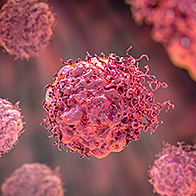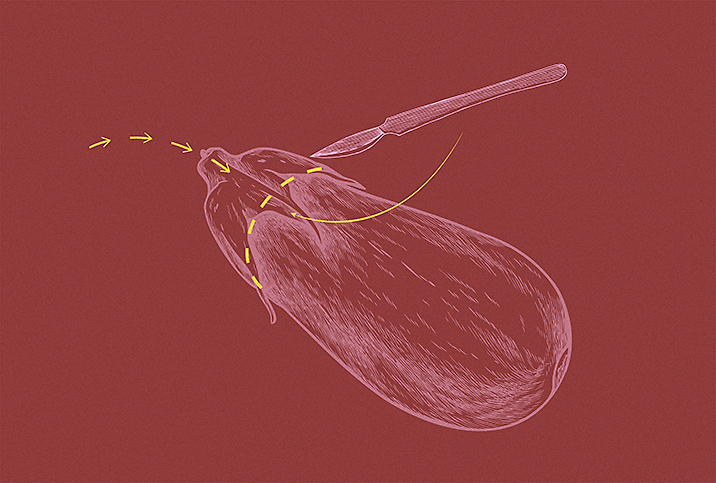Early Penile Cancer Intervention Yields Far Better Outcomes

Penile cancer is relatively rare for men living in North America and Europe, as it accounts for less than 1 percent of all cancers in men on those continents. However, it is responsible for up to 10 percent of malignancies in men in certain regions of Africa, Asia and South America.
But regardless of where you live, if the cancer reaches an advanced stage, a partial or total penectomy—surgery to remove all or part of a patient's penis—might be necessary, making early-stage interventions of critical importance for keeping the phallus as intact and functional as possible.
"Penile cancer is a cancer of the skin of the penis that usually grows either on the prepuce, if it's still there, or the glans or the corona, which is the rim at the border of the glans," explained Maarten Albersen, M.D., Ph.D., a doctor in the laboratory of experimental urology at KU Leuven and an assistant professor in the urology department at University Hospitals Leuven in Belgium.
Albersen said penile cancer is a kind of squamous cell carcinoma, a common form of cancer that affects the skin and spurs abnormal growth of squamous cells.
'Detecting the cancer early allows for conservative treatment to preserve the maximal amount of penile tissue possible.'
"I think most penile cancers develop as some hardness or a growth on the head of the penis or the shaft of the penis—usually the head of the penis—and it's more common in uncircumcised men, which is why the incidence is a little bit higher in Europe," according to Shreyas Joshi, M.D., M.P.H., an assistant professor and director of the bladder cancer program in the urology department at the Emory University School of Medicine in Atlanta.
There's an association with the foreskin covering the head of the penis that causes chronic irritation. Men who struggle with obesity might also find it difficult to easily examine their genitals regularly or thoroughly. In such cases, a mass might grow quite large before men notice the abnormality.
"But oftentimes, it will start as just a small mass at the head of the penis and grow from there," Joshi said.
As Albersen explained, an uncircumcised penis can indeed be at greater risk, but he cautioned against taking that as an argument for circumcision of children because the cancer is so rare and millions of boys would need to have their foreskin cut to prevent even one case.
Causes, symptoms and warning signs
Joshi said detecting a hard growth by self-inspection is usually how men first notice a potentially cancerous penile problem, which is likely to be painless early on. If you begin to feel the lymph nodes in your groin, the disease is probably advanced, but typically, cancer presents as a small growth first.
"It can be either driven by infection with human papillomavirus or driven by other factors, such as carcinogens—smoking, UV light—[and] inflammation as a result [of] phimosis, which is a tightening of the foreskin," Albersen said.
The relevant literature suggests about 50 percent of cases are HPV-driven and the other half are caused by factors unrelated to the virus, he added.
Cancer can present with just redness on the penis or with a velvety appearance and a spot on the penis, often indicating carcinoma in situ, an early-stage development. Other signs could include swelling, a lump or an ulcus, more commonly called an ulcer.
Treatments for penile cancer
"The mainstay of treatment is surgical, especially when it's localized," Joshi said.
Albersen explained surgery is standard, and the smaller the tumor, the greater the likelihood doctors can take organ-sparing approaches to treatment, which are now all but universally adopted when feasible as he noted in a co-authored 2019 editorial in Current Opinion in Urology.
"If you have, for example, a small lesion on the foreskin, you can do a circumcision," he said. "If you have a small lesion on the glans, you can take away a part of the glans or just take away the lesion."
A skin excision can remove a tiny lesion, Joshi said. But even that, he noted, "can be relatively morbid."
Generally, though, by the time it presents, the growth is big enough that a doctor will try to take out the tumor while leaving a negative surgical margin, referring to the tumor-free cells on the outer edges of the surgically excised specimen. Failure to remove all of the cancerous tissue can cause abnormal growth again, quickly.
Alternatives to surgery include radiotherapy, which Albersen said is used less often because of its slightly higher complication rate. Men undergoing the therapy can develop strictures of the urethra, for example.
"And other therapies are limited to very early disease," he added. "So then we're talking about carcinoma in situ, and then you can treat it with topical therapy, which can be either like a cream that boosts your immune system or a cream that contains some kind of chemotherapy. Or you can use laser [technology] to ablate smaller tumors and superficial tumors."
Topical medications to treat early-stage penile cancer aren't always effective, Joshi said. Partial removal of skin along the glans or shaft and then perhaps placing skin grafts to cover the phallus tend to be go-to treatments when the problem is detected early.
Although the prognosis for advanced penile cancer remains poor and is associated with high mortality rates, doctors might still prescribe palliative chemotherapy for patients in those late-stage cases, depending on the patient's age and general condition.
Some research suggests surgery alone can be inadequate to properly treat aggressively spreading penile cancer. Instead, multimodal management, which combines surgery and systemic treatments including chemotherapy—and perhaps immunotherapy modalities that are under study in clinical trials—is also worth considering.
Using early-stage intervention to prevent penectomy
If the tumorous tissue is more than a couple of centimeters in size, the patient might require a partial penectomy, where a surgeon removes part of the penis and leaves most of the phallus behind in order to have the urethra come out straight and see if the patient can urinate somewhat normally, Joshi explained.
Albersen said if the case involves a bigger lesion on the glans or erectile bodies on the shaft, then urologists usually have to resort to penectomy.
Tumors affecting more of the penis can result in the removal of the entire penis.
"Doing the total [penectomy], you have to take the entire penis and reroute the urethra all the way to the perineum, which is underneath the scrotum, so that they can urinate by sitting down," Joshi said.
Obviously, this procedure results in a major lifestyle change, but full removal of the penis is often necessary to prevent cancer from spreading to the lymph nodes and beyond, thereby enabling rapid growth as the condition frequently becomes resistant to chemotherapy and extremely difficult to treat.
In contrast, Joshi noted, when minimalistic surgery is an option at earlier stages, it gives the patient the best chance of recovery.
"Detecting the cancer early allows for conservative treatment to preserve the maximal amount of penile tissue possible," Albersen added. "The earlier the disease is detected, the least consequences it will have on the functions of the penis."
Problems mount when men ignore potentially cancerous growths and don't visit their doctor until a late stage when it's too late to treat in a limited fashion.
"The advice I would give is there's no reason to be embarrassed about something like this," Joshi said. "I mean, it could very much be lifesaving. Even a small lesion, if addressed early on, can [cause] minimal change in the way you live your life and function, but [early treatment] could quite literally save your life, and it's absolutely worth getting something odd checked out."




















